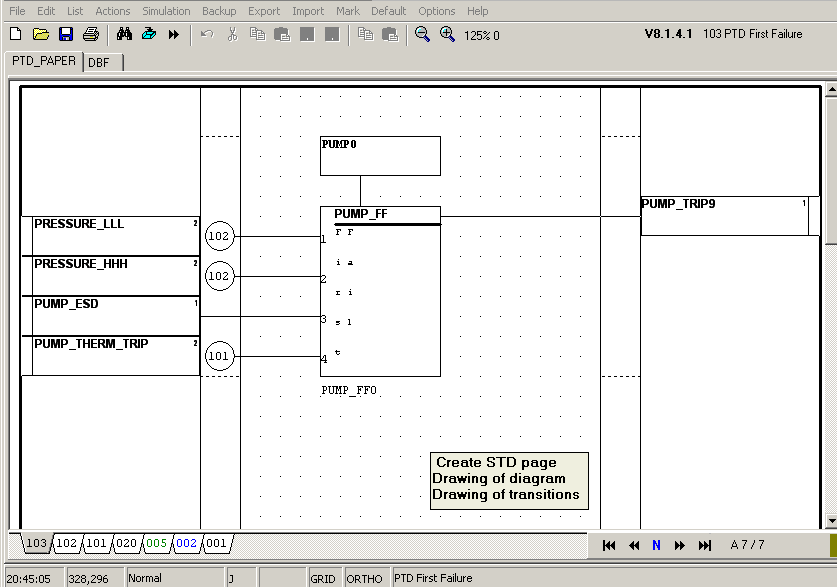PTD pump example drawing 1
Page 110, a State Diagram page, is started from the beginning. A State symbol is positioned on top and given the name PUMP0. PUMP is the name of the PTD (and its STD) and the postfix "0" indicates its unique state number.
Normally the default size of the symbol is wider, so it is shortened a little. The demonstration proceeds using a I command to get a copy of the State symbol with an incremented name: PUMP1.
Observe these (almost) real time drawing instructions. Notice at the status bar below what key is pressed:

HCADwin V8140 was used with the "Options, Settings, Settings" command used to check the "Search symbol Aqua". It demonstrates positioning new symbols better.
Note that the trip state PUMP9 was created by entering a "1" in the STDCOL column of the DBF. The TagDetails screen provides an input field, STDtrip, for that.
Drawing the transitions is started by clicking in the free, like a normal line. For connecting State symbols, you must click on the edge or within the source state and end at the destination. Note the the transition Booleans are red, because these variables are not existing in the DBF as created variables. I change the names in a later phase.
Note how the trip transition starts as a normal transition, but later its starting point is moved to a free spot, now indicated by a black square.
For positioning the Boolean name in the center of a transition and to make it curve, you can use the <Shift>S for a straight line and up to four S commands to get through the four standard curved versions. The command must be given with the cursor on the transition Boolean.
The STD becomes a real PTD by adding the timing symbol T_Adm. It must have the same name as all members of the STD, but the number stripped.
Note that the position was wrong at first, indicated by the read name PUMP. It must reside to the right of the most right State. (Remember that the symbol position for its sequence during execution is determined by its upper left coordinate.)
After finding the proper spot, the <Enter> was given and the T_Flush is added automatically on the left of the T_Adm.







